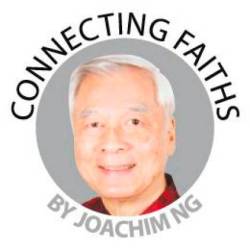ARE religion and science incompatible belief systems that clash at many points? You may have been educated to accept only those scientific truths that support your religious worldview, and to consider momentous scientific findings, such as the evolution of lifeforms, as challenging the revealed truth.
How many people are in the grip of such a mindset? Scholars have found through their research that nations with low scores on science and mathematics performance in the 2022 Programme for International Student Assessment (Pisa) have higher numbers of people who are more likely to reject science and adopt a negative view of religious diversity than nations that score high in Pisa.
Malaysia dropped 21 points to 416 in the Pisa science score and fell 32 points to 409 in the mathematics score. Singapore held the No.1 spot among 80 nations in both categories, scoring 561 points in science and 575 points in mathematics.
Correspondingly, the island republic enjoys greater acceptance of religious diversity and the crucial role of science than Malaysia, which ranks a low No.52 position in science and 53 in mathematics.
Why is there a correspondingly low acceptance of religious diversity in nations that score low in science? It is because the same dualistic thinking that sets religion and science apart as competitors will also make you believe that only one religion possesses the correct truth while other religions convey inferior or false beliefs.
Across the board, Malaysia’s educational philosophy is to keep religion and science far apart. Religious teachers view science sceptically while science teachers stay off religious subjects. In tandem with this bifurcation, centres for religious learning never adopt a multifaith scriptural and science-based curriculum as the assumption is that the religion being taught in the centre is the one true faith that trumps all others and also trumps science.
It is thus generally unknown in Malaysia that the highest circles of the wise in the world have accepted religion and science as complementary pathways, and not rivals. The forte of religion is social cohesion and formalised ethics. The forte of science is evidential knowledge and truth inquiry.
Wesak Day next week should be more than just an occasion for the ringing of temple bells and the recitation of sutras; it ought to celebrate the need for religion and science to forge a working partnership for the common purpose of building a global civilisation.
Religion does impart some truthful insights but its revelatory process is top-down lacking the power of repeatable experiments and independent verification. Science does foster social cohesion and natural ethics but its process is bottom-up lacking the power of command and control.
Religion, anchored to written scriptures, began with civilisation and was the sole authorised repository of truth until science arose 400 years ago. The newbie is destined to assume the lead role in humanity’s quest for the truth of everything.
Science has formulated a comprehensive understanding of the workings of God in creation. While theologians have to depend entirely on descriptions of creation provided in scripture – and these descriptions appear to be allegorical with heavy use of metaphors and poetry – scientists of the highest calibre have through their research discovered the structure of creation and have felt the vibrancy of God.
The field of research that interests scientists most is the notion of “Void” revealed by the Buddha (founder of Buddhism) and Lao Tzu (founder of Taoism) 2,500 years ago. “Look upon the world as Void,” the Buddha teaches. “Void is how we designate the origin of the cosmos,” Lao Tzu teaches.
The invention of field ion microscopy in 1951 and scanning tunnelling microscopy in 1981 opened the doors for researchers to see the Void with their own eyes. For several thousand years, thinkers had reasoned that all solid matter could be cut into smaller pieces until a final invisible particle called the atom was reached that could not be cut any further. Miniscule but still solid, the atom (which means “indivisible” in Greek) kept the world believing in a solid universe. The Buddha and Lao Tzu could be laughed off.
However, field ion microscopy and scanning tunnelling microscopy have enabled scientists to see the atom in a surprising light: it is not solid. Scientists are now able to see that the “solid” atom is mostly empty space with a nucleus in the middle which contains almost all of the mass of an atom. Tiny particles called electrons whizz around the nucleus.
The distance between the nuclei of two atoms is so immense that evolutionary biologist Richard Dawkins uses the analogy of two footballs to represent two nuclei. The distance between the two footballs is more than 15km. On a football scale, each electron is smaller than a gnat and several kilometres away from the football. The gnat is smaller than a mosquito.
However, the nucleus consists of protons and neutrons bundled together. These constituent components – protons and neutrons – are not basic stuff as they break down into quarks. Every proton and neutron is made up of three quarks that are bound together by particles called gluons.
Even more stunning is the discovery of wave-particle duality in nature wherein quantum particles can assume the form of waves and vice versa. Only when a wave function collapses does it turn into a particle, occupying a localised place in time. Scientists have noted that the wave-particle duality is stunningly alike the yin-yang duality of Taoism, which comprises two halves of a bigger whole, the Tai Chi.
If you study a drawing of yin-yang, you will notice that the two halves dovetail into each other, and each is present in the other as a dot – an ancient precursor of the wave-particle duality to be discovered only in the 20th century.
What form of mass is the ultimate? There is none, as the most convincing evidence today points to mass as derived from vibrations of energy at the quantum level. However, scientific thinkers have long postulated that there is one more constituent of matter: information. This trinity has been formalised into a mass-energy-information equivalence.
Theoretical physicists suspect that at its most basic level, the universe is composed of information, and this is the essence of physical reality. A big push for the primacy of information comes from the discovery of quantum entanglement. Two elementary particles that are separated by vast distances can be entangled such that their behaviour is correlated although the two particles are not in contact. How did information flow between them?
In proving that the world is truly a Void as preached by the Buddha and Lao Tzu, scientists have discovered that ultimately there is no duality, no separation of reality into God on the one hand and the universe as his creation on the other hand. There is only one, and that one is the all.
The 16th century Christian Reformation leader Martin Luther, at the start of the scientific revolution, blessed scientific research as holy when he labelled nature as God’s other book. Nobel Prize-winning theoretical physicist Frank Wilczek wrote in his 2022 book Fundamentals: “In studying how the world works, we are studying how God works, and thereby learning what God is.” Scientific investigation is a holy task.
Supported by a massive array of verifiable evidence gathered by science, we can at last dispel the notion that fundamental differences separate one religion from another. This notion stems from a belief in a false “us versus them” duality that has been perpetuated for too long.
The immediate takeaway lesson from science is that any religious teaching, whatever the source, ought to be accepted if it tallies with scientific facts. On the other hand, any religious belief that is contradicted by scientific evidence should not be paraded to deny science.
Nevertheless, as the forte of religion is social bonding and ethical formulation, any religious “truth” that has been disproved by science ought to be held in noble esteem as a psychological reality also having social bonding value. This is the main purpose of any belief. Keep believing in Santa Claus because he makes children happy.
All religions can find common ground for cooperation to benefit humanity by formulating new ethics to restrain identity politics shattering national unity, abuse of religious issues for political gain, threats to our health from big industries, beating of war drums around the world, biodiversity loss and climate change.
Drop the word “unbeliever” to label people of other religions and build social cohesion that embraces people of diverse religious, ethnic and cultural backgrounds. This is the new pathway for all religions to partner with science and become pillars of a global civilisation.
The writer champions interfaith harmony.
Comments: letters@thesundaily.com










